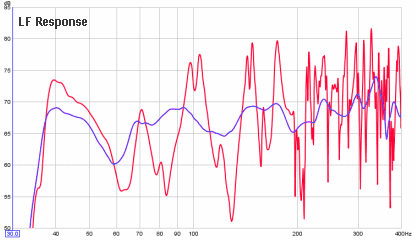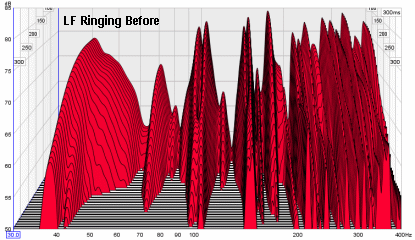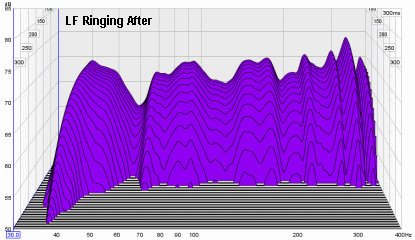Why measurements are essential
Some are not looking for accuracy, but instead are happy with the sound they can get while making all choices subjectively. For those that are aiming for accurate bass that is true to the original, measurements are necessary. To ensure that you have achieved accuracy, you will need to evaluate with measurements as well as subjective listening. Both evaluations are necessary to validate the result.
Defining accuracy
Accuracy can't be defined without some objective measures, otherwise it becomes far too open to interpretation.
Firstly, a smooth frequency response should be achieved in each significant listening position. In a 2 channel setup this might be just one sweet spot, but in a home cinema the target may include many seats spread around the room. The latter presents a much bigger challenge. While speakers typically aim for +/- 3 dB in an anechoic chamber, in the bass range we can tolerate a bigger range. I'd suggest that around +/- 5 dB is a suitable goal for the bass range. A typical audio setup that has been done by ear will often achieve only a 30 - 40 dB range.
 | |
| Above: Red: untreated Purple: treated. Image courtesy of Ethan Winer at Real Traps |
This example comes from Ethan Winer at Real Traps. In this example, a small room was treated extensively in a non-obtrusive style.You can see it in his Hearing is believing video.
These waterfall plots show how the response changes over time. In the first waterfall plot, the ridges indicate how the modes decay at a slower rate. In the second plot, you can see a much more even decay.
Don't you trust your ears?
A common argument against taking measurements is that one only needs to trust their ears. The problem with this is that while our ears are the final judge, they aren't able to give the kind of specific feedback that is needed to fully optimise bass. Suppose you were to choose a subwoofer placement for a home cinema with 8 seats. To do this by ear, you would need to listen to a number of tracks and then repeat the process for each seat and again repeat this process for each position. Try try 8 subwoofer positions for 8 seats means 64 evaluations. Obviously the process would be far too tedious and the result would be that it gets done poorly.
By contrast, you can measure in seconds and get useful data and you will see the real impact of each placement.
Basic tools
A basic measurement system includes:
- measurement microphone,
- microphone preamp,
- microphone cable,
- tripod and
- measurement software.
Professional vs prosumer choices
Professionals use high end microphones which cost upwards of $1000. For personal use, these microphones provide more accuracy than is needed. Many enthusiasts use the Behringer ECM8000 which has a street price of around $80. The main limitation of these is that their unit to unit consistency is quite poor. Fortunately, they can be purchased individually calibrated from Cross Spectrum Labs. While all mics come with a generic calibration file, individual calibration is needed so to overcome the unit consistency issues. The extra cost is modest and I strongly recommend purchasing a mic that has been individually calibrated.
These microphones require phantom power, which is provided in the low cost mixer shown above. While it is possible to only use a phantom power unit, the preamp allows gain control. The absence of gain control could mean the correct level can't be achieved.
Introducing the Room EQ Wizard
It turns out the only bass measurement software you will ever need is free: REW - Room EQ Wizard. This application is very easy to use and can be downloaded from the Home Theatre Shack where extensive support is available.
Download REW here >





No comments:
Post a Comment
All comments are moderated.